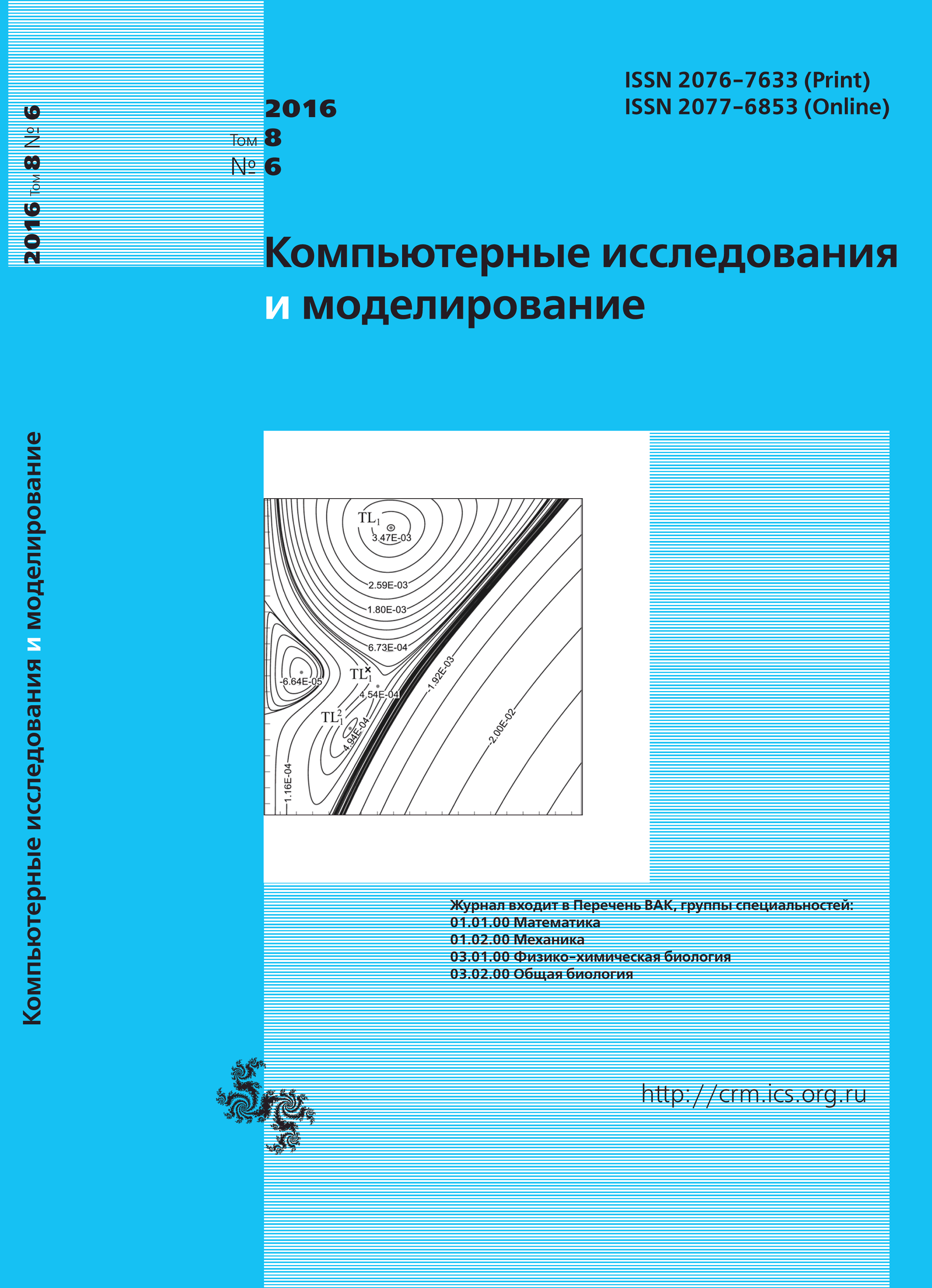All issues
- 2025 Vol. 17
- 2024 Vol. 16
- 2023 Vol. 15
- 2022 Vol. 14
- 2021 Vol. 13
- 2020 Vol. 12
- 2019 Vol. 11
- 2018 Vol. 10
- 2017 Vol. 9
- 2016 Vol. 8
- 2015 Vol. 7
- 2014 Vol. 6
- 2013 Vol. 5
- 2012 Vol. 4
- 2011 Vol. 3
- 2010 Vol. 2
- 2009 Vol. 1
On the construction and properties of WENO schemes order five, seven, nine, eleven and thirteen. Part 2. Numerical examples
WENO schemes (weighted, essentially non oscillating) are currently having a wide range of applications as approximate high order schemes for discontinuous solutions of partial differential equations. These schemes are used for direct numerical simulation (DNS) and large eddy simmulation in the gas dynamic problems, problems for DNS in MHD and even neutron kinetics. This work is dedicated to clarify some characteristics of WENO schemes and numerical simulation of specific tasks. Results of the simulations can be used to clarify the field of application of these schemes. The first part of the work contained proofs of the approximation properties, stability and convergence of WENO5, WENO7, WENO9, WENO11 and WENO13 schemes. In the second part of the work the modified wave number analysis is conducted that allows to conclude the dispersion and dissipative properties of schemes. Further, a numerical simulation of a number of specific problems for hyperbolic equations is conducted, namely for advection equations (one-dimensional and two-dimensional), Hopf equation, Burgers equation (with low dissipation) and equations of non viscous gas dynamics (onedimensional and two-dimensional). For each problem that is implying a smooth solution, the practical calculation of the order of approximation via Runge method is performed. The influence of a time step on nonlinear properties of the schemes is analyzed experimentally in all problems and cross checked with the first part of the paper. In particular, the advection equations of a discontinuous function and Hopf equations show that the failure of the recommendations from the first part of the paper leads first to an increase in total variation of the solution and then the approximation is decreased by the non-linear dissipative mechanics of the schemes. Dissipation of randomly distributed initial conditions in a periodic domain for one-dimensional Burgers equation is conducted and a comparison with the spectral method is performed. It is concluded that the WENO7–WENO13 schemes are suitable for direct numerical simulation of turbulence. At the end we demonstrate the possibility of the schemes to be used in solution of initial-boundary value problems for equations of non viscous gas dynamics: Rayleigh–Taylor instability and the reflection of the shock wave from a wedge with the formation a complex configuration of shock waves and discontinuities.
Copyright © 2016 Evstigneev N.M.
Views (last year): 13.Indexed in Scopus
Full-text version of the journal is also available on the web site of the scientific electronic library eLIBRARY.RU
The journal is included in the Russian Science Citation Index
The journal is included in the RSCI
International Interdisciplinary Conference "Mathematics. Computing. Education"







